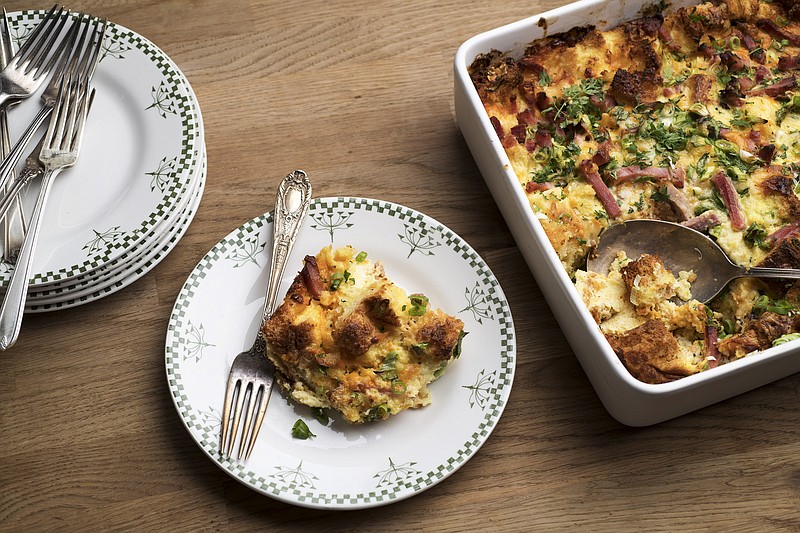We seldom had dessert after dinner when I was growing up - that was for company or holidays. Sometimes there was red Jell-O, considered a weeknight treat. My favorite Jell-O product, though, was the pudding mix, preferably the chocolate one. I can still see the four little pudding bowls chilling in the refrigerator, each one covered in plastic wrap. That was my utterly American concept of pudding: a sweet, custardy substance, eaten with a spoon. Somehow rice pudding and tapioca pudding were never part of my mother's repertoire.
In England, however, the word "pudding" simply means dessert - any sort of dessert. "What's for pudding?" is a classic refrain.
And what a marvelous assortment of puddings there are: rhubarb tarts; gooseberry fools; luscious concoctions of berries, meringue and whipped cream; and all manner of trifles. Some puddings are layer cakes. Others are dense and fruitcake-like, filled with dried candied fruits and spices. There are steamed puddings, too, like the famous Christmas pudding, cooked over steam rather than baked in the oven, and served warm with a jug of pouring cream or boozy hard sauce.
Just to confuse things, British pudding may also be savory, like Yorkshire pudding, the puffy batter cake that often accompanies roast beef, baked in the roasting pan with some of the beef drippings. And there's black pudding (blood sausage) or pease pudding, made from dried split peas.
Some puddings can go either way, such as bread-and-butter pudding. (We call it bread pudding here.)
Sweet bread-and-butter pudding, an old-fashioned frugal dessert, is made from stale bread, combined with a mixture of milk, eggs and sugar, then baked until set. Though far from posh, it's a good way to use up bread that would otherwise be wasted. An added handful of raisins or dried apricots takes it up a notch.
The fact is, however, that bread-and-butter pudding, given a salt-and-pepper spin, makes a fine savory lunch or light supper, one that I prefer to the dessert version.
I like to use day-old tender buttery brioche; day-old challah works well, too. I don't remove the crusts, but simply cut the bread into 1-inch chunks. Some grated Gouda or Gruyère cheese and strips of ham are layered with the bread in a buttered baking dish. The "custard" in this case has no sugar, just a dash of black pepper and a pinch of cayenne, along with half-and-half and a few eggs.
It couldn't be easier to make.
The result is really rather like a quiche, and though a bit rustic, has a similar delicacy. It smells heavenly and looks gorgeous as it emerges from the oven. Everyone loves it - even those who expect a pudding to be sweet.
Ham-and-Cheese Brioche Pudding
Yield: 6 servings
Time: 1 1/2 hours
1 tablespoon butter, for greasing the pan
1 (12-ounce) brioche loaf or smaller brioches, cut into 1-inch cubes (about 8 cups)
6 eggs
4 cups half-and-half or whole milk
2 teaspoons salt
1/2 teaspoon ground black pepper
Pinch of nutmeg
Pinch of cayenne
1/2 cup thinly sliced scallions
6 ounces thinly sliced ham, cut crosswise into matchsticks (about 1 1/2 cups)
8 ounces grated Gouda or Gruyère cheese (about 4 cups)
Heat oven to 375 degrees. Butter an 11- by 11-inch baking dish. Fill dish with brioche cubes, and set aside.
In a large bowl, beat eggs well. Whisk in half-and-half, salt, pepper, nutmeg, cayenne and scallions. Pour mixture over cubes in baking dish.
Sprinkle ham and cheese on top of mixture, and press down to make sure everything is submerged. Set baking dish on a rimmed baking sheet.
Transfer baking dish and baking sheet to the middle shelf of the oven, and bake for 45 minutes, or until a skewer inserted in the middle of the dish emerges dry. Let rest for 10 minutes or so before serving.
